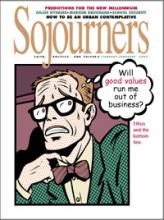If you ever despair, as I often do, whether massive change for good can come through peons like us, read the book Social Movements of the 1960s for a shot of hope (by Stewart Burns, Twayne Publishers, 1990).
Maids boycotted Montgomery buses and walked to work. Children trooped past Bull Conner’s fire hoses in Birmingham. Young women at Berkeley marched against inequality and male domination. Their footsteps reverberated all the way to Washington and echoed back to change the mindset of an entire nation. Racial and gender discrimination were crippled.
However, in this otherwise stirring story there is a disturbing question—are we only liberated from something, or are we also liberated into something?
In 1966 Black Power advocates seized the reigns of the Student Non-Violent Coordinating Committee and dishonorably discharged battle-scarred white comrades from their ranks. Until that time, two compelling ideas characterized the civil rights movement as a whole: liberating an oppressed people and building a "beloved community" between freed oppressed and redeemed oppressors. Eventually liberation alone became the dominant model for the black freedom struggle and for social movements that followed.
In 1978 secular feminist Vivian Gornick wrote that the point of the feminist movement was that every woman could define herself "in any terms she shall choose." Later, Christian feminist Elisabeth Schussler Fiorenza wrote, "àat the heart of the spiritual feminist quest is the quest for women’s power, freedom, and independence" (In Memory of Her, 1983). Today, highly influential theologians call for "women-only churches." Again, the "beloved community" seemed to get lost.
Has America moved from "separate but equal" to "separate and equal"? A glorified and replacing a disdainful but?
Read the Full Article
